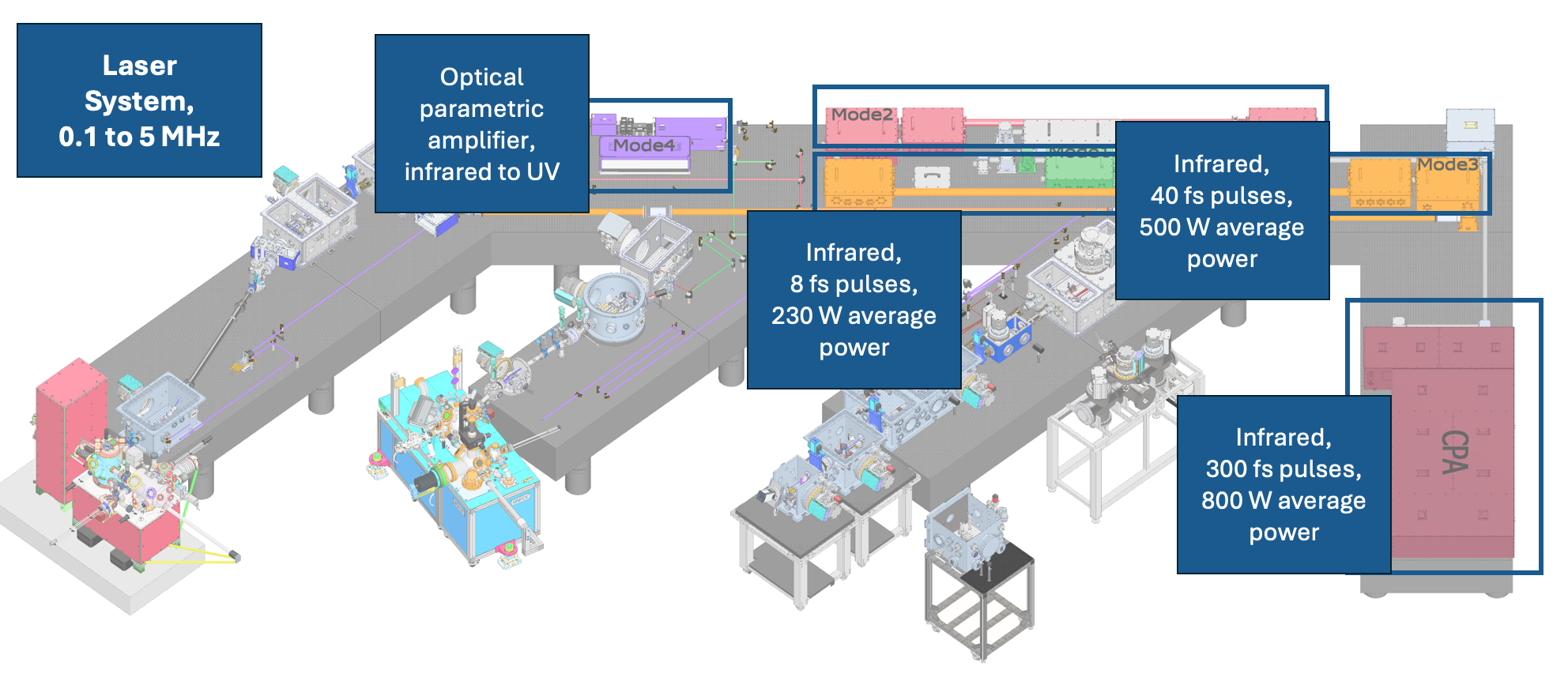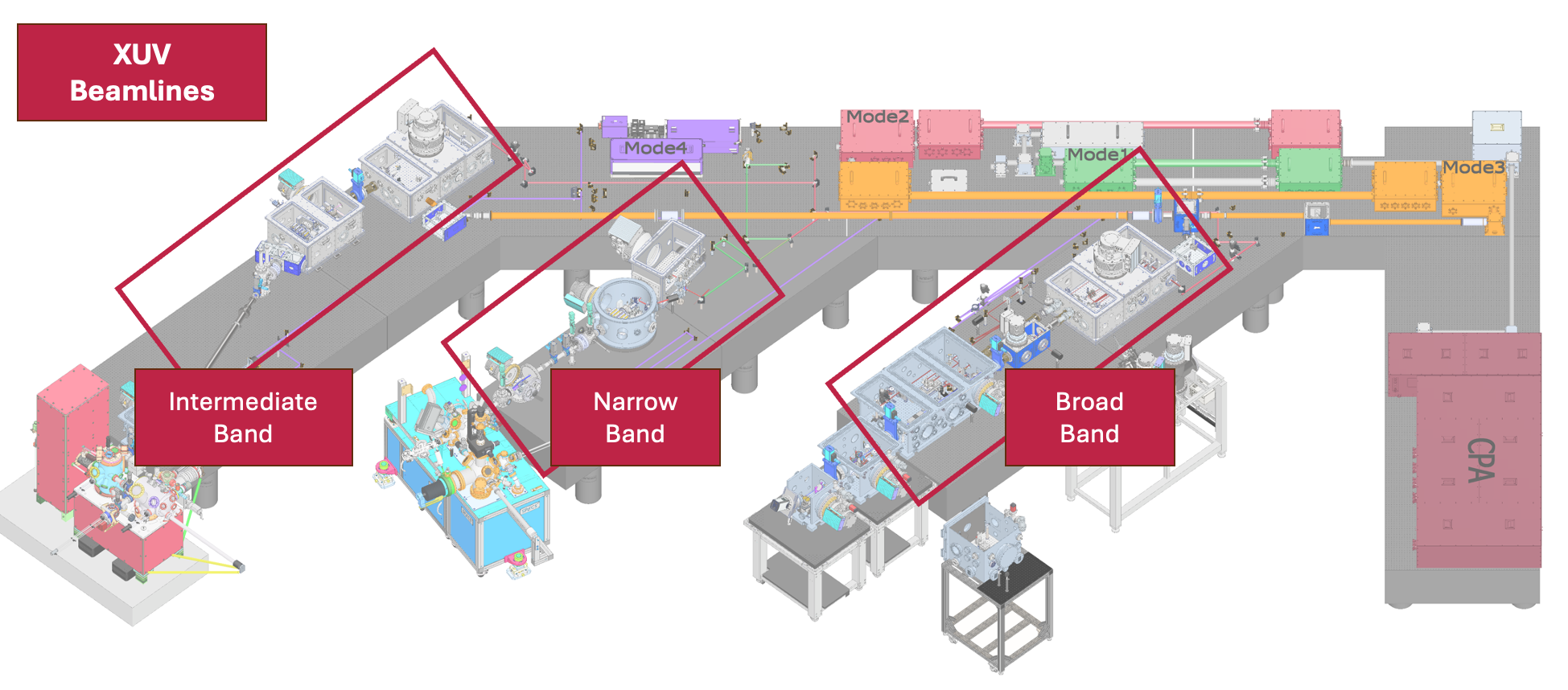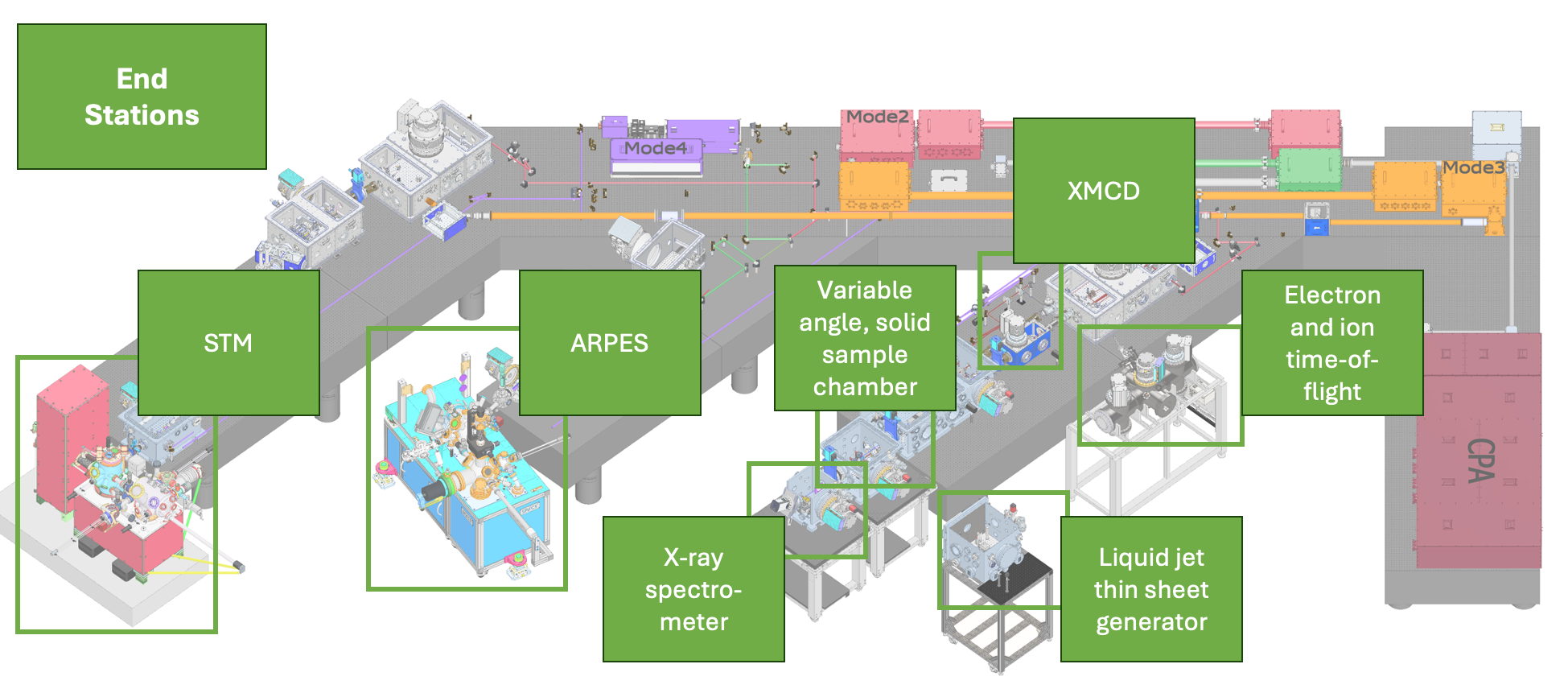NSF NeXUS transforms previously challenging experiments into routine procedures while enabling entirely new realms of research. Its revolutionary capabilities stem from a high-performance laser system operating at 100 kHz repetition rate with nearly 1 kW average power. This represents a hundredfold improvement in data collection rates, dramatically expanding experimental possibilities.
The NeXUS System


Accessing Femtoseconds and Below
NSF NeXUS builds on the work of a generation of scientists who discovered the “high harmonic generation” process for generating extreme ultraviolet (XUV) pulses of light that provide femtosecond to attosecond time resolution. The three beamlines of NSF NeXUS provide shaped light pulses that are optimized to support distinct classes of experiments, some that require the shortest time resolution and others that require narrower energy resolution.

End Stations Enable Measurements
The NeXUS System supports diverse measurements—gases, liquids, solids, material surfaces—by coupling the Laser and Beamline light sources into several possible End Stations that contain the samples and a variety of analytical techniques. The combinations of laser and XUV light pulses provide the time resolution to measure the dynamics of chemicals and materials. The NeXUS End Stations are:
> Element-specific scanning tunneling microscopy (STM) measures the tunneling current between an atomically sharp tip and the surface of a material to image atoms and molecules
> Angle-resolved photoelectron spectroscopy (ARPES) measures electrons ejected from the surface of a material with energy and angular resolution
> An X-ray spectrometer measures the energy of the XUV light that reaches it
> A variable angle, solid sample chamber enables either transmission or reflection of XUV light from a test material
> A liquid jet, thin sheet generator makes a sufficiently thin liquid sample for the XUV light to transmit through it, and a transmission measurement to be made
> An X-ray magnetic circular dichroism (XMCD) add-on converts the linearly polarized XUV into circularly polarized and enables comparison of sample response to each polarization
> An electron- and ion-time-of-flight spectrometer measures the energy of electrons and the mass of ions ejected from gaseous samples due to interactions with the optical pulses

Users and Staff Link Everything Together
The NSF NeXUS team designed, built, and integrated these systems between 2019 and 2025. The NSF NeXUS staff continue to advance the NeXUS System and support user experiments. The currently available NSF NeXUS capabilities are described on our System Availability page.
NSF NeXUS users bring their ideas to NSF NeXUS about how to combine the laser, beamlines, and end stations to obtain new information about the chemicals and materials they are studying. If you are interested in becoming a user of NSF NeXUS, we welcome you to reach out to us to explore your idea and then submit a proposal for System time.

Funded by the U.S. National Science Foundation (NSF)
The NSF National eXtreme Ultrafast Science Facility (NeXUS) is supported by the U.S. National Science Foundation under NSF Award Number 2410901. Any opinions, findings, conclusions or recommendations expressed in this material are those of the author(s) and do not necessarily reflect those of the U.S. National Science Foundation.